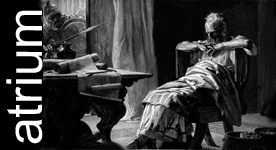From Kathimerini:
Exciting new finds at the archaeological site of Pella have opened a new chapter in Macedonian history. Beneath the ruins of the ancient capital of the Macedonian kingdom is a large prehistoric burial ground that has yielded the first evidence of organized life in Pella during the third millennium BC.
It was while they were engaged in conservation, repairs and other work to highlight the site that the excavation team from Aristotle University came across more than 100 Early Bronze Age burials in large jars, accompanied by marble works of art from the Cyclades, local ceramics and metalware.
The finds are so recent that experts at the Demokritos Center have not yet completed the analysis of bones that will yield precise dates. However, the initial evidence supplements what is already known about Pella in the Early Bronze Age (2100-2000 BC), when it was the most important city in Bottiaea, long before it was made capital of the Macedonian realm. What became known as “the greatest of Macedonian cities” was apparently built on top of the prehistoric graveyard when Archelaus moved his capital there from Aiges, excavation director Professor Ioannis Akamatis told Kathimerini.
Grave goods from among the artifacts found at the prehistoric burial ground.
It was on this site that one of the most important urban centers developed. It had what was at the time an innovative, Manhattan-style, rectangular town plan, with an extensive network of water and sewerage pipes, which helped make Macedonia’s largest city one of the most important political and cultural centers of the Hellenistic Era (4th to 1st centuries BC).
The precise boundaries of the prehistoric cemetery cannot be determined because a large part of it lies beneath the urban center of the ancient city, but the graves that have been located so far beneath the city roads provide enough information to form a picture of prehistoric Pella.
In accordance with burial customs in Pella’s prehistoric community, the dead were placed in jars, simple trenches or in stone structures. The bodies placed in jars were buried with their limbs folded and the head either close to the mouth or the bottom of the jar.
Many of the jars are between 150 and 160 centimeters tall. One of them will be exhibited in a new museum in Pella as it was found, with the remains of the body and the grave goods.
The position of the body depended on gender: Men were placed facing the right, women to the left. The arms were crossed over the chest and the hands drawn up to the face below the jaw. Some graves contained infants and children up to the age of 3, while several belong to individuals aged 14-16.
The bodies in the jars represent about 30 percent of the burials. “The Macedonian plain was fertile in antiquity too. They stored goods (agricultural products, wood and metal) in storage jars, and that practice also influenced burial customs,” said Akamatis.
The dead were accompanied by objects, many of which had long been in everyday use before they ended up in the grave. Most tombs contained at least one vessel. Some of the dead were buried with valuable jewelry such as silver rings, gold earrings, bracelets and necklaces, bronze clasps, needles and daggers. “The prosperity of Pella’s prehistoric community is apparent from the metal goods and jewelry,” commented Akamatis.
All the clay finds were vessels made by hand using techniques employed in the Early Bronze Age in Macedonia (3100-2200 BC). Expertly worked marble flasks bear traces of red paint (associated with perceptions of death and life after death), indicating that they were used in burial ceremonies.
Akamatis said that the marble vessel of Pella, which is very rare for Central Macedonia, is related to a Late Neolithic Age (4500-3100 BC) example from Alepotrypa Dirou in the Mani, while a series of small Cycladic flasks date from the Early Cycladic I period.
“The flasks, made with marble probably from Paros, found their way to the coast of prehistoric Pella by sea from the Cyclades to the Gulf of Loudia. It is one of the earliest known examples of trade and economic ties between the Cyclades and Macedonia and the broader region.”
The settlement to which the burial ground belongs must have been fairly close by, Akamatis believes.
The Bronze Age settlement may have been maintained into historical times, since a few distinctive Early Iron Age objects have been discovered at Pella.
